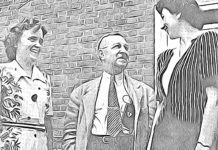three, six and 12 months.
The study’s 129 participants, mostly 40- to 50-something-year-old males, were receiving outpatient rehab treatment in a cognitive behavioral treatment-based, non-abstinence setting at the Ann Arbor VA.
The ImPAT subjects, who were also treated for addiction, experienced a decrease in pain and an increased ability to function, as well as a reduction in alcohol use compared to the second group of veterans — though the study’s authors noted both groups still had similar rates of drug use.
The study expressed a promising outlook that the low-cost ImPAT approach could be used internationally by addiction rehabilitation centers through proper training of standard psychological techniques.
A follow-up study is underway and consists of 480 non-veterans in a residential addiction treatment program, which hopes to further solidify its efficacy against a nationwide opioid epidemic.
















